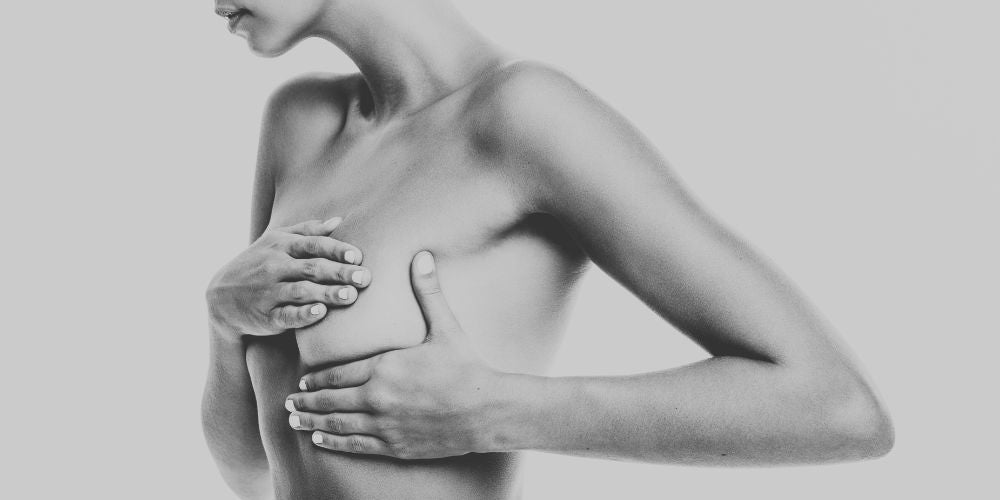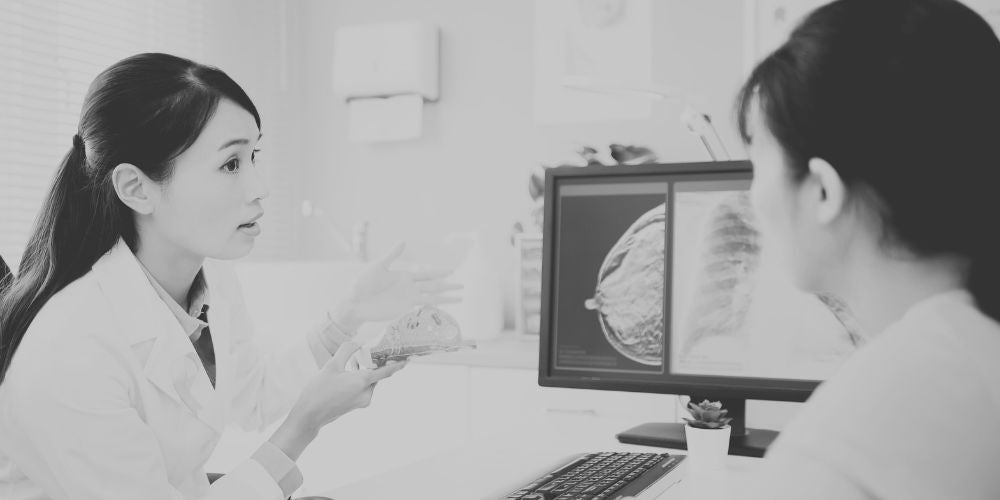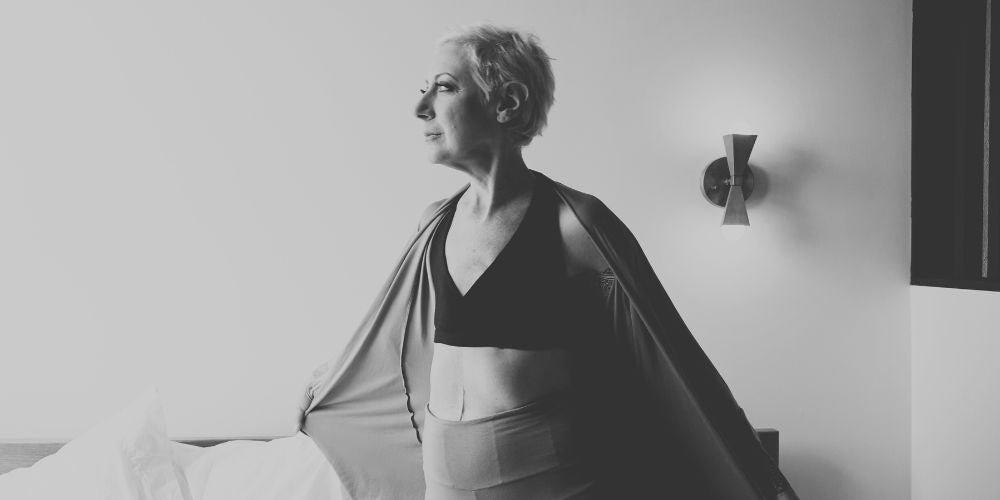Guest post by Samantha Paige
At AnaOno we love sharing information with our community when the information can help with successful treatment, recovery and wellbeing. Artist, parent, philanthropist and BRCA1 previvor Samantha Paige follows up her popular guest post about her explant decision, with her Last Cut process, a six-step decision-making framework.
If there were some easy fix for dealing with trauma or notable decisions in life, someone would have bottled it by now. The truth is that making significant decisions under stressful conditions, especially on the heels of a diagnosis, can be unbelievably frightening, overwhelming and confusing. Particularly true in the cancer world, we are often asked to make a battery of choices at a rapid pace without much time to sit with or ponder the questions, answers and longer term effects on our lives that each major “yes” or “no” will create. This was certainly the case when I was diagnosed with thyroid cancer at age 21. Everything seemed to happen so quickly, and I did not necessarily know what to ask or think in terms of challenges, mental and physical, that might arise later as a result of what happened during treatment and in the future. While I had more time when I was diagnosed with the BRCA1 genetic mutation in my late twenties, I still faced intimidating data and a series of notable questions and decisions.

In these crisis moments, knowing what to do and how to make resonant decisions becomes much easier when we make a habit of doing so in our day-to-day lives. Having our daily actions reflect who we are and how we want to be living with the smaller, seemingly mundane choices builds stamina for doing so when the stakes are higher. When I was teaching a workshop to 200 youth soccer players this summer, I made the connection that the road to excellence for our internal well-being is no different than what happens on the field. We must practice. This often undesired answer is the same one that I have offered up to my daughter time and time again when we have spoken of improvement and ease for her on the soccer field, in a math class, or even in social interactions. As I have learned from friends who are phenomenal professional athletes, even those with incredible talent—in fact, especially those with incredible talent—make a habit of practicing the behaviors and mental states that they want to call upon in times of high stress. In the context of the cancer and body world, I believe that a commitment to daily decision-making that creates greater congruency between our inner landscape and the external choices we make builds patterns and habits that make it easier (though not easy) to make more informed, authentic decisions for ourselves in times of crisis or pressure.
I learned this the hard way. After overcoming thyroid cancer at age 21, I experienced over a decade of PTSD, anxiety and depression from unprocessed trauma related to that period of my life. I was so lost in my inner experience that I looked outside of myself for answers. I outsourced happiness and direction from family, friends and society, because I felt so broken inside myself. I “got by” this way until I finally realized how disconnected I had become from myself and how so many of the major choices I had made in life were not a reflection of who I was or how I wanted to be living. Over the course of years, I began to learn new ways to approach my daily life and decision-making that created greater continuity between my own beliefs and actions out in the world. I did some considerable rebalancing that led to a divorce, career shift, move, another significant breakup and overall re-configuring of my life.

That period of reflection led to the creation of Last Cut Project in 2016 when I decided to use my explant surgery as the ultimate metaphor for these last cuts, or significant decisions made to line up our inner and outer worlds in order to create a life that feels like our own. In my recent book, LAST CUT, I use the experience of my explant surgery to highlight seven universal steps to making a last cut. Before I opted to have my implants removed in 2016, I was living in a state of disconnect (step 1). I felt like a stranger in my own body. I had elected to have reconstruction with my preventive double mastectomy 8 years prior because of the many voices, some within my own head, that insisted that implants were what made “women happy and at home in their bodies.” The many years of living with them provided evidence that this was not the case for this woman, and I had completely disconnected from my chest. What came next was a period of questioning (step 2). What does not feel right? How did I feel before the reconstruction? How do I want to feel now? What questions would I ask in this current iteration of self? As I honestly sat with the answers to these and many more questions, I became very clear that the right choice forward for me was the explant. I spoke to my doctor and made a commitment (step 3) to that surgery.

Leading up to the removal, I spent time focusing on the ways that I could seek connection (step 4) with and take care of myself, as well as what help I needed to seek from others to support me through this last cut moment. Last cuts are often choices that are made within ourselves, but they do not need to be made in isolation. We are able to stand stronger in our choices when we discover ways to take care of ourselves, no matter how big or small, and reach out to those around us and our community to receive comfort and nourishment in the process. Often when we make last cuts, no matter their size, there comes a moment in time when we must rely on trust (step 5) and believe that we have made the correct decision for ourselves given whatever information or motivation we had at the time. We might decide that giving up coffee is the best thing to do for ourselves in a given moment, yet whatever clarity we have in that choice does not take away from the fact that sometimes things get worse before they get better. Caffeine withdrawals are uncomfortable, right? After my explant surgery, I felt relief and joy, but still had drains and post-surgical pain. There was a period of trusting that the sacrifice and throbbing would be well worth the regained sense of self and wellness I saw in my future.
With time comes embodiment (step 6). We begin to feel as if our last cut becomes part of our daily fabric. Once I healed from the explant surgery, I realized that this iteration
of self was one that made me feel more powerful, connected and at home in this body than I could ever remember. This phase can happen subtly as we transition from those moments of being on our knees asking for mercy or support to a recognition that we are standing on two feet doing just fine, and sometimes it can occur like a lightning bolt. The more days that we feel this embodiment of new choices within self, the more that we begin to step into living with greater freedom (step 7), and hopefully in turn, wellness. This moment is when the very thing that had separated us from ourselves has been dealt with, digested and now offers space for us to grow and change in new ways.

I have found that the same last cut framework I apply to big life decisions, like my explant, is the one I use with ongoing choices, such as what I eat, whom I spend time with and where I use my energy. The more I practice making smaller decisions that feel authentic to who I am, the more gracefully I am able to approach the bigger ones that have greater weight, tighter timelines or more stress. A lasting commitment to this way of being has helped me fashion and live a life that feels like a reflection of who I am and who I want to be. The key to the whole process of working towards creating greater alignment and freedom that builds over time is practice. We can work to train ourselves to make authentic and aligned decisions by asking ourselves honest, pointed questions and listening to the answers. What I have noticed is that I continue to get to know myself better and to discover and explore the ways I can support myself and others in being ourselves in all our unique glory. The last cut process is never over and is rarely easy. Its framework serves as a reminder that there is a universal arc to the human experience of learning and growing. Does this mean every choice comes easy at this point? Hardly. Does this process ever end? Absolutely not. Does this mean I have all the answers? Not even close. Is it worth it? Without question.
LAST CUT, the book, is available now.
Samantha Paige is an artist and mother with a passion for life. She created Last Cut Project in 2016, a multi-media documentary project about those big life decisions- last cuts- we make to bring us closer to truly living for ourselves. As a young adult cancer survivor and BRCA1 previvor, Samantha has learned to use life experiences as fuel. Her health challenges have been her greatest teachers. After 6 major surgeries and some lovely scars to show for it, she is happy to feel stronger and healthier than ever. Samantha was featured in Equinox's 2017 Commit to Something campaign, baring her mastectomy scars, and more recently in The Nightside, a documentary film to empower and educate on the BRCA gene. Samantha's first book, LAST CUT, is available now. Last Cut Project has recently launched a storytelling platform to share stories and amplify the voices behind them. If you have a story to share, Last Cut Project would love to hear from you!
You can find out more information about Samantha, her book, LAST CUT, her podcast, Last Cut Conversations, and her documentary project on the website and across social media at @lastcutproject.
All images from LAST CUT, the book. Image credit: Lisa Field for Last Cut Project










